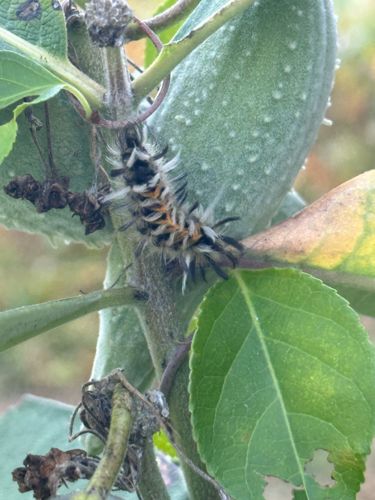Milkweed Tussock Moth Caterpillar, Milkweed Tiger Moth Caterpillar
Scientific Name: Euchaetes egle
Order & Family: Lepidoptera, Erebidae (formerly Arctiidae)
Size: Caterpillar: Up to 3.5-4 cm (1.4-1.6 inches) in length. Adult Moth: Wingspan of about 3.5-5 cm (1.4-2 inches).

Natural Habitat
Found in areas where their host plants, primarily milkweeds, grow. This includes meadows, fields, roadsides, gardens, and open woodlands across North America.
Diet & Feeding
The caterpillars primarily feed on the leaves of milkweed plants (Asclepias spp.). They are also known to feed on other plants like dogbane (Apocynum spp.) and oleander (Nerium oleander), especially if milkweed is scarce.
Behavior Patterns
As a caterpillar, they are known to feed on various host plants. When disturbed, they may curl up or drop from the plant. They pass through several instars before pupating. The adult moths are nocturnal and typically do not feed; their primary purpose is reproduction.
Risks & Benefits
Risks: The hairs (setae) on the caterpillar can cause skin irritation or allergic reactions in some sensitive individuals if touched. The caterpillars accumulate cardiac glycosides from their milkweed diet, making them unpalatable and mildly toxic to most predators. Benefits: They are a food source for some predatory insects and birds. As adults, they can contribute to pollination, though their role is minor compared to other insects.
Identified on: 8/21/2025